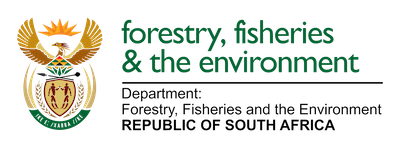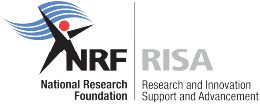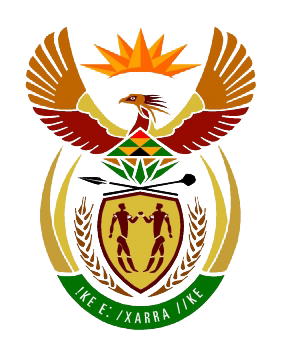
by Ria Olivier | Mar 1, 2024 | Antarctica, Engineering, Research, SANAP, SANAP Student
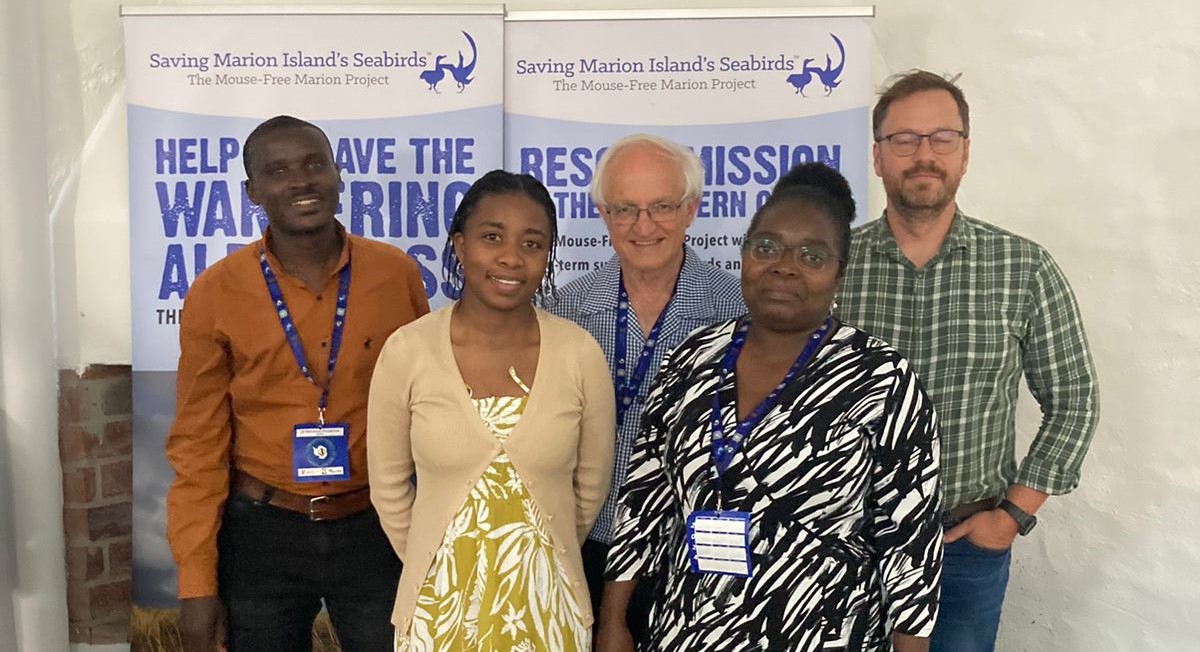
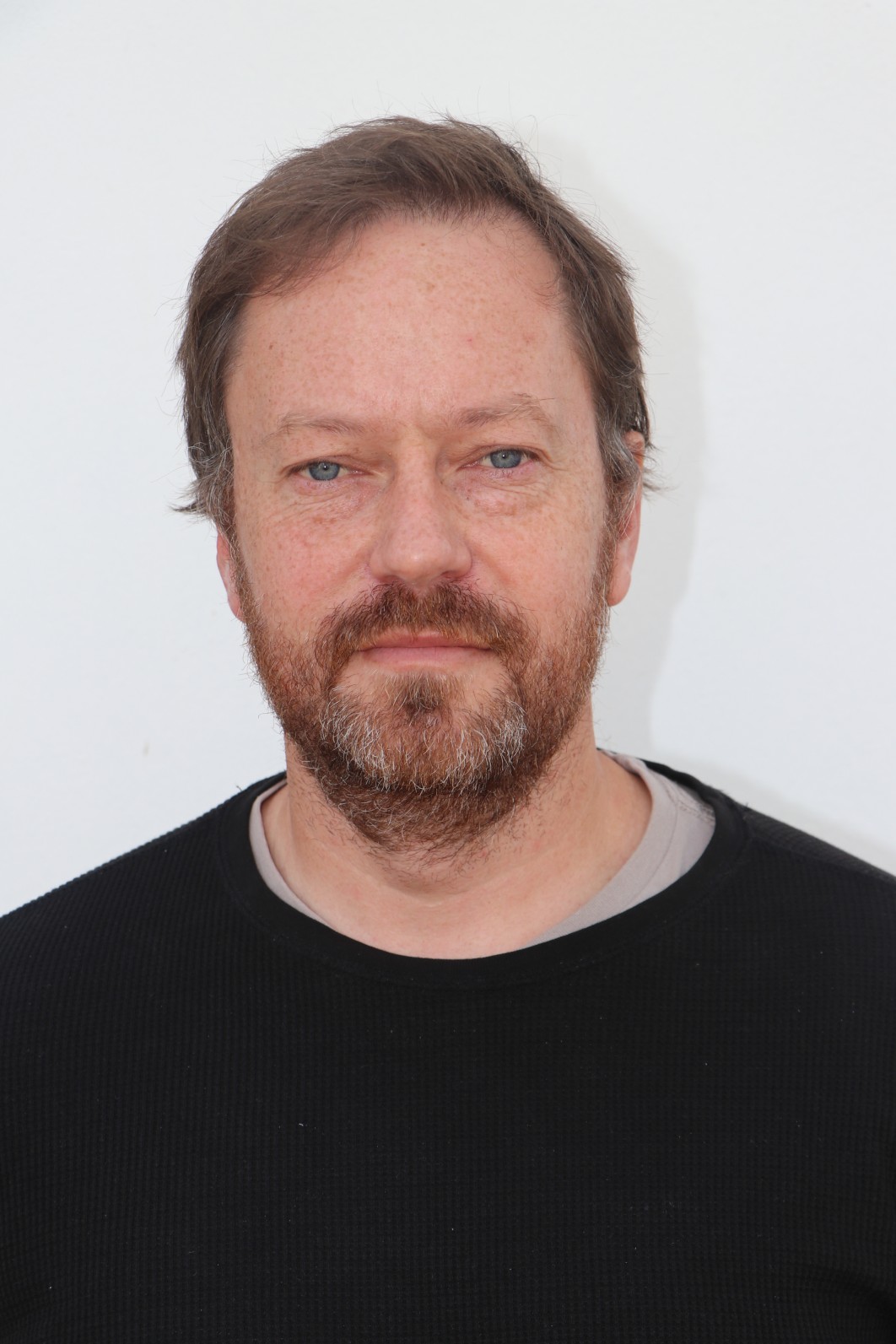
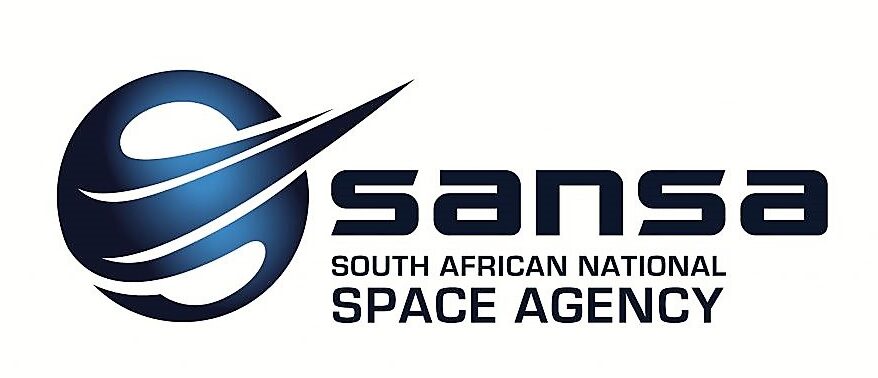 The last session on research themes were earth observations within the Marine and Antarctic Research Strategy research themes. The session on Space Physics was chaired by Dr Stefan Lotz. Dr Michael Kosch was not available in person but joined online with his presentation. (Above: group photo of presenters). All the presenters are from the South African National Space Agency (SANSA) based in Hermanus.
The last session on research themes were earth observations within the Marine and Antarctic Research Strategy research themes. The session on Space Physics was chaired by Dr Stefan Lotz. Dr Michael Kosch was not available in person but joined online with his presentation. (Above: group photo of presenters). All the presenters are from the South African National Space Agency (SANSA) based in Hermanus.
 Above(l-r): Michael Kosch, Tshimangadzo M. Matamba, Nkosinathi Masango, Pierre Cilliers, Alicreance Hiyadutuje
Above(l-r): Michael Kosch, Tshimangadzo M. Matamba, Nkosinathi Masango, Pierre Cilliers, Alicreance Hiyadutuje
- Dr Michael Kosch: How blue skies auroral research created and saved billions. (abstract)
- Tshimangadzo M. Matamba: Monitoring the Impact of Space Weather using South African Near-Real Time Space Weather GNSS Products. (abstract)
- Nkosinathi Masango: Analysis of ionospheric storm effects based on GPS and ionosonde data during geomagnetic storms. (abstract)
- Dr Pierre Cilliers: The long-term variation of the geomagnetic field in Antarctica as measured in Hermanus, Maitri and at SANAE-IV since 2007. (abstract)
- Alicreance Hiyadutuje: Sporadic E layer altitude modulated by the Traveling Ionospheric Disturbances at high latitudes. (abstract)
- Dr Stefan Lotz: Observation of powerful gamma ray burst GRB221009A from Marion Island. (abstract)
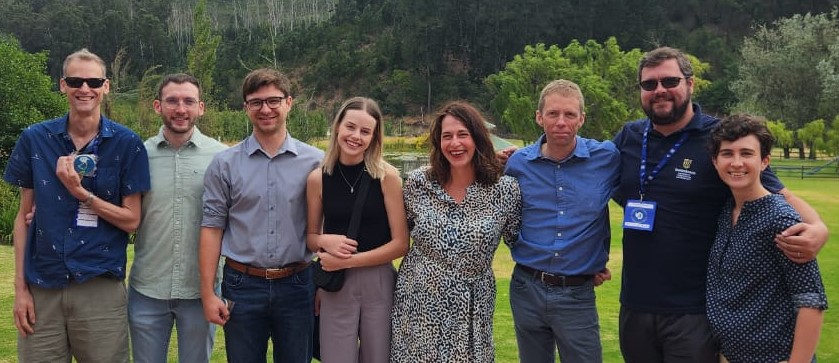
by Ria Olivier | Feb 28, 2024 | Engineering, Research, SA Agulhas II, SANAP, SANAP Student
 Another session within the Marine and Antarctic Research Strategy research theme : Innovation and engineering was chaired by Annie Bekker of the Sound and Vibration Group (SVG) at Stellenbosch university. This was an evening session done in a round table format and included international speakers from Finland. Prof Bekker gave an overview of the research and the sessions format tool on a round table/panel discussion. (Picture: Presenters of the session at the venue)
Another session within the Marine and Antarctic Research Strategy research theme : Innovation and engineering was chaired by Annie Bekker of the Sound and Vibration Group (SVG) at Stellenbosch university. This was an evening session done in a round table format and included international speakers from Finland. Prof Bekker gave an overview of the research and the sessions format tool on a round table/panel discussion. (Picture: Presenters of the session at the venue)
 Above (l-r): Annie Bekker, Gerhard Durandt, Chante Van der Spuy, Nico de Koker
Above (l-r): Annie Bekker, Gerhard Durandt, Chante Van der Spuy, Nico de Koker
- Annie Bekker SA Agulhas II – Flagship for vessel 4.0. (Abstract)
- Gerhard Durandt The Development of a Structural Digital Twin for the SA Agulhas II. (Abstract)
- Chante Van der Spuy The Classification of Multi-Impact Events by the Application of Inverse Methods and Machine Learning. (Abstract)
- Nico de Koker Inversion and Extreme Value Analysis of Ice Loading on Propulsion Shaft of the SA Agulhas II. (Abstract)
 Above(l-r): Micaela Melim, Ben Steyn, Brendon Nickerson, Nicole Taylor
Above(l-r): Micaela Melim, Ben Steyn, Brendon Nickerson, Nicole Taylor
- Micaela Melim Expanding the Capabilities of Mariner 4.0: A human-centred monitoring and research tool. (Abstract)
- Ben Steyn A Longitudinal Study of the Open-Water Performance of an Ice-Class Vessel. (Abstract)
- Brendon Nickerson Inverse calculations of ice impacts on propulsion machinery. (Abstract)
- Nicole Taylor The berth of Mariner 4.0: A human-centred monitoring and research tool. (Abstract)
 International speakers join the session and Sarah Nicholson of SOCCO present on robotics innovation. JP Barnard gave a presentation on data management during the cross-theme session chaired by Anne Treasure on day 1. Above(l-r): Jukka Tuhkuri, Miko Lensu, Sarah Nicholson, JP Barnard
International speakers join the session and Sarah Nicholson of SOCCO present on robotics innovation. JP Barnard gave a presentation on data management during the cross-theme session chaired by Anne Treasure on day 1. Above(l-r): Jukka Tuhkuri, Miko Lensu, Sarah Nicholson, JP Barnard
- Jukka Tuhkuri Ice Load measurement and ice condition monitoring onboard S.A. Agulhas II. (Abstract)
- Miko Lensu Sea ice research of Finnish Meteorological Institute. (Abstract)
- Sarah Nicholson South African Robotics and Ocean Technology Innovation Centre (SA-RobOTIC). (Abstract)

by Ria Olivier | Feb 26, 2024 | Antarctica, Biosecurity, Engineering, Mammology, Marine Protected Area, Marion Island, Research, SANAP

 Dr Mia Wege chaired the session on Marine Mammals during the 6th SANAP Symposium that resorts within the Marine and Antarctic Research Strategy – ecosystems, biodiversity and biodiscovery. The session includes talks on various marine and the presentations were arranged according roughly to species and area. This Included elephant seals, fur seal, Ross seal, whales in ice, whales along the Southern African coast The session was presented in panel, discussion format, that allowed for questions form the audience. (Photo Credit: ALSA Archive)
Dr Mia Wege chaired the session on Marine Mammals during the 6th SANAP Symposium that resorts within the Marine and Antarctic Research Strategy – ecosystems, biodiversity and biodiscovery. The session includes talks on various marine and the presentations were arranged according roughly to species and area. This Included elephant seals, fur seal, Ross seal, whales in ice, whales along the Southern African coast The session was presented in panel, discussion format, that allowed for questions form the audience. (Photo Credit: ALSA Archive)
- Dr Christian Murray: Understanding the drivers of Marion Island’s elephant seal population. (Abstract)
- Leandri de Kock: Considering individual variation when investigating marine predator behaviours during life- history events(Abstract)
- Dr Liezl Pretorius and Dr Greg Hofmeyr (presenting): Canine morphometrics as a tool for distinguishing species, sex and age in Southern Ocean fur seals(Abstract)
- Dr Mia Wege: The conveyor belt of Ross seals in the Lazarev Sea and their behaviour. (Abstract)
- Matthew Germishuizen: Sea ice declines coincide with a period of reduced reproductive success in Southern Ocean top predator (Abstract)
- Oluwaseyi Paul Babalola: Entropy-based Detection and Classification of Bryde’s Whale Vocalizations: An Approach for Understanding and Conserving an Endangered Species(Abstract)
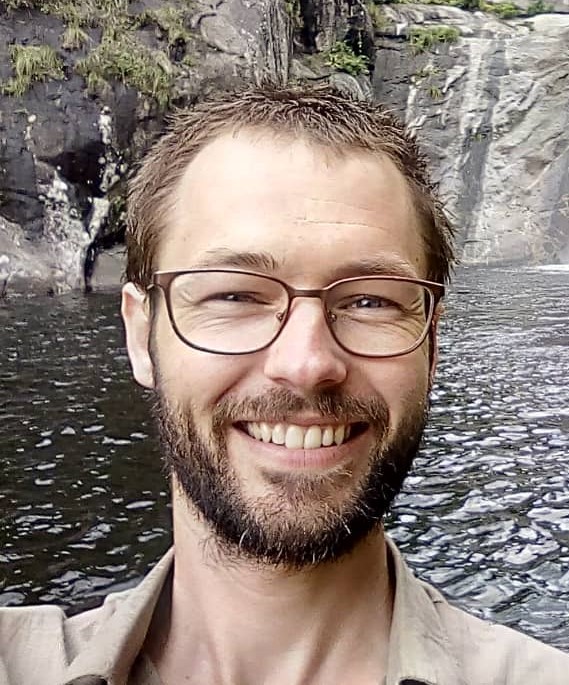
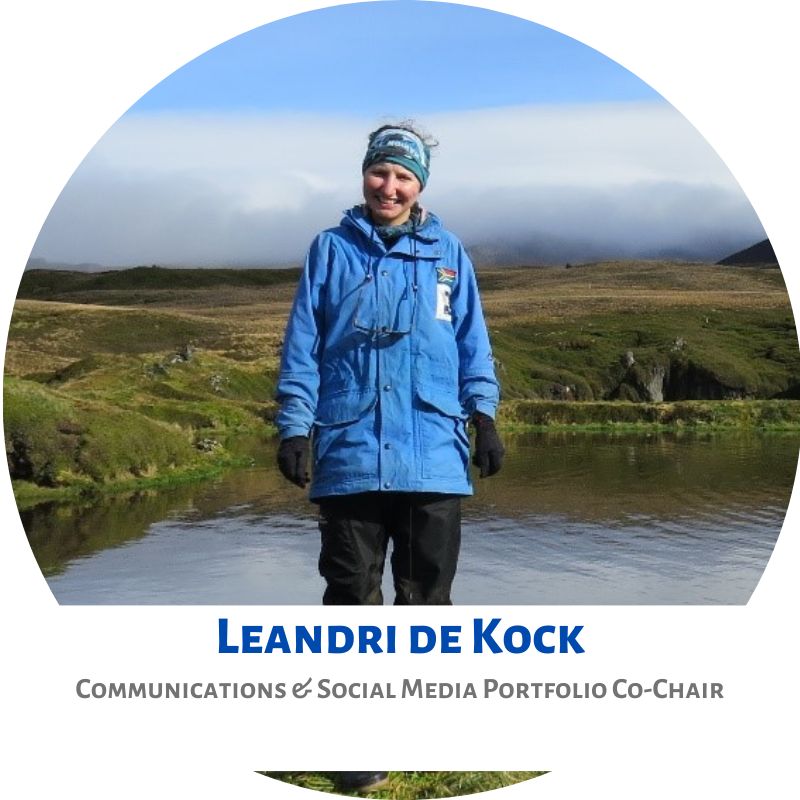
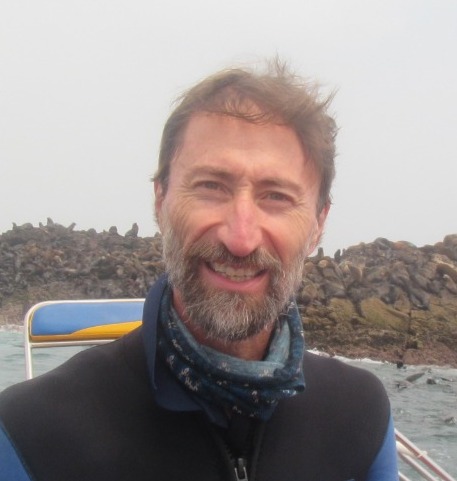
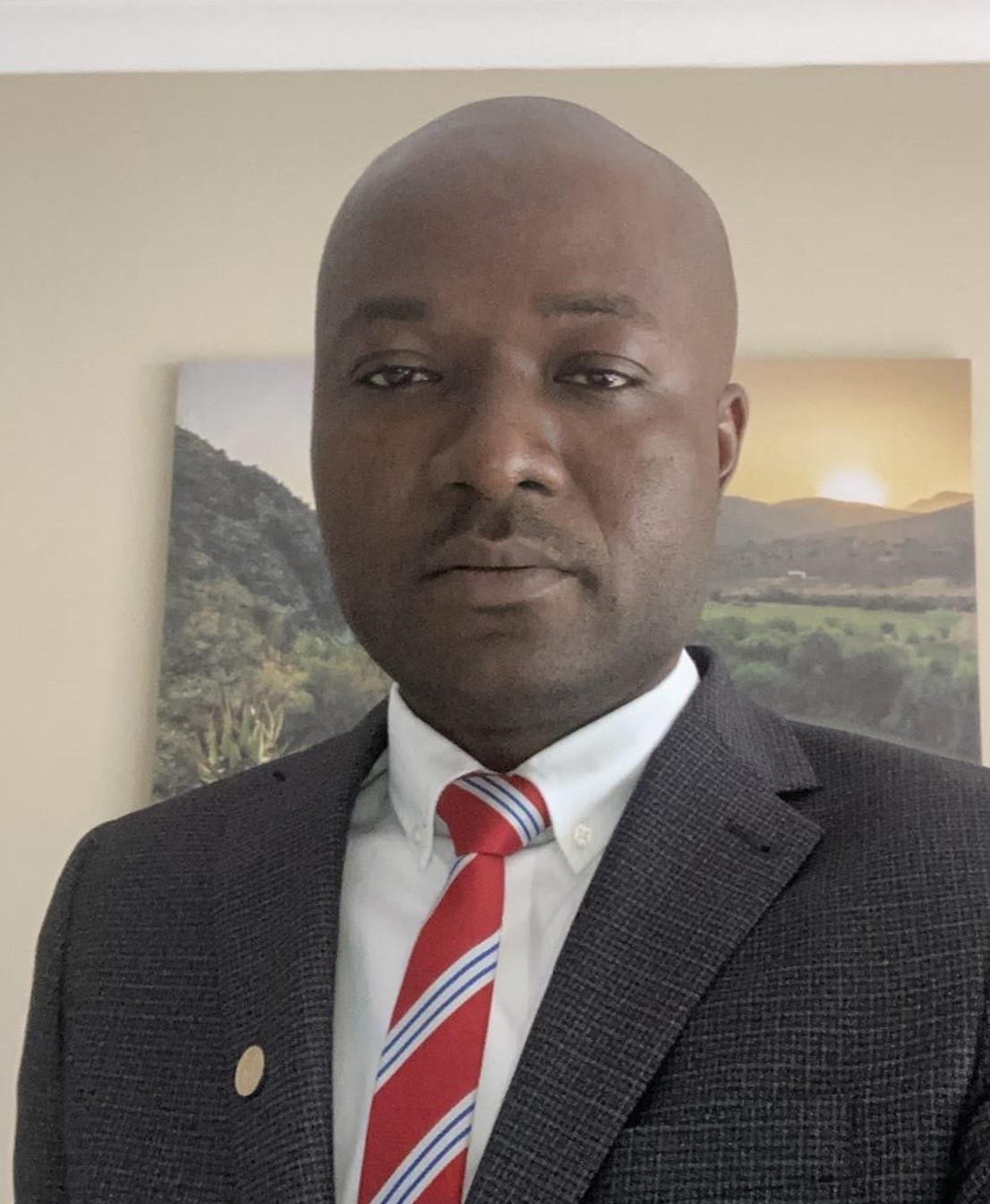
(Above L-R: Dr Christian Murray, Leandri de Kock, Dr Greg Hofmeyr, Oluwaseyi Paul Babalola)
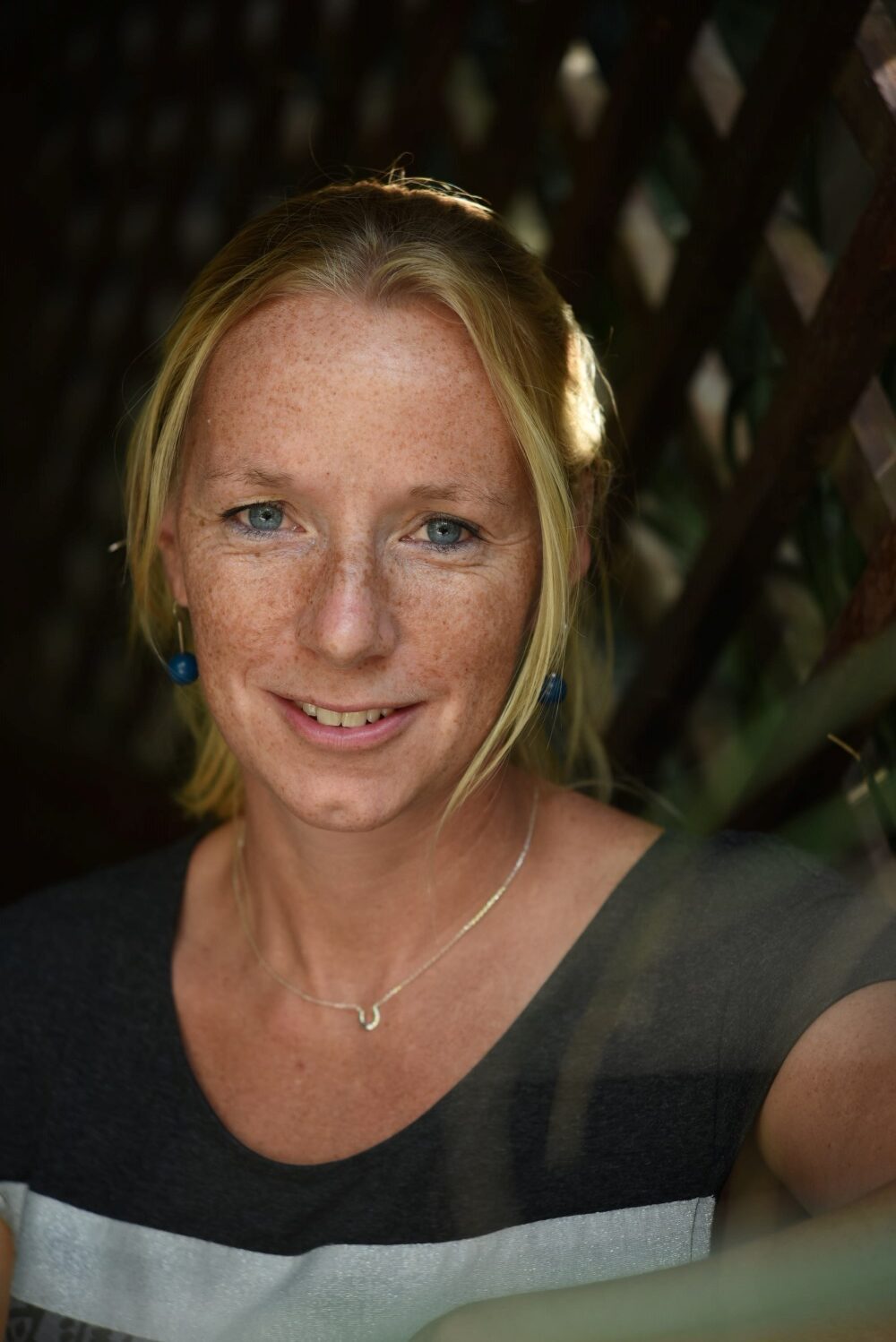
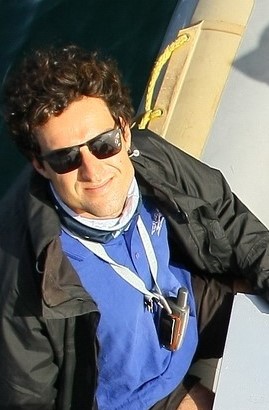
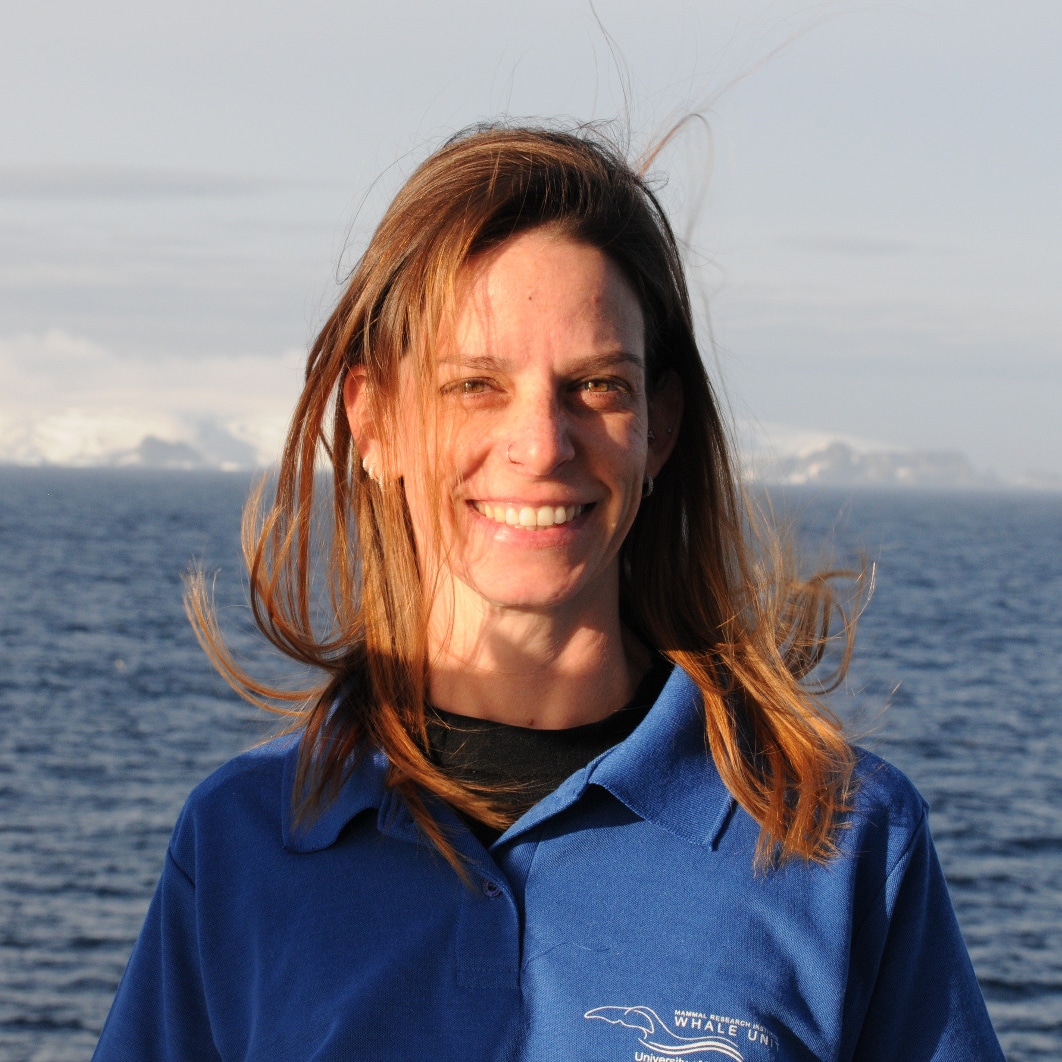
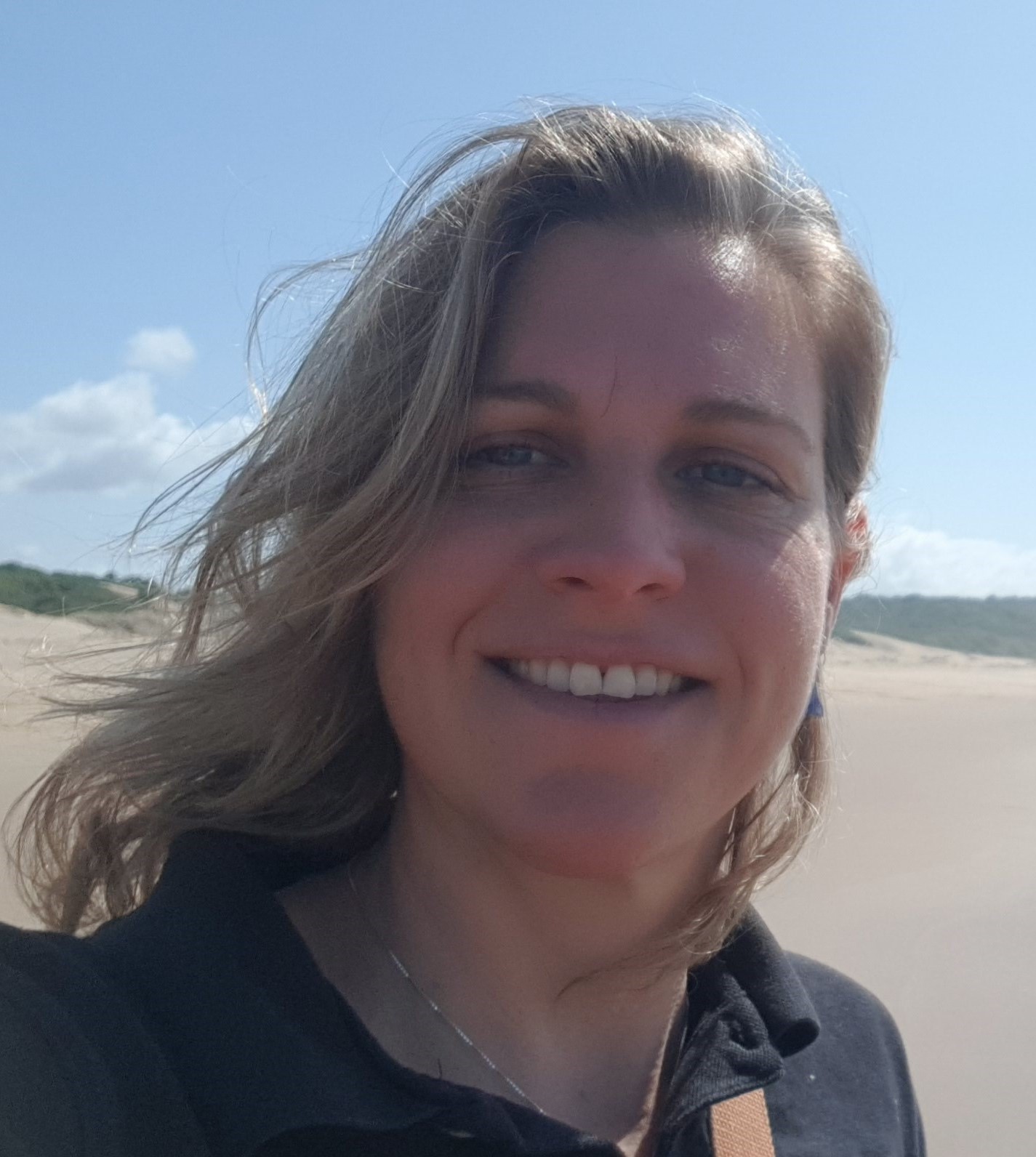
It was great to see the Mammal Research Institute Whale Unit of the University of Pretoria based in Hermanus, Western Cape represented during the symposium by Dr Els Vermeulen, Matthew Germishuizen, Elisa Seyboth and Antonia Immerz. (Above L-R)
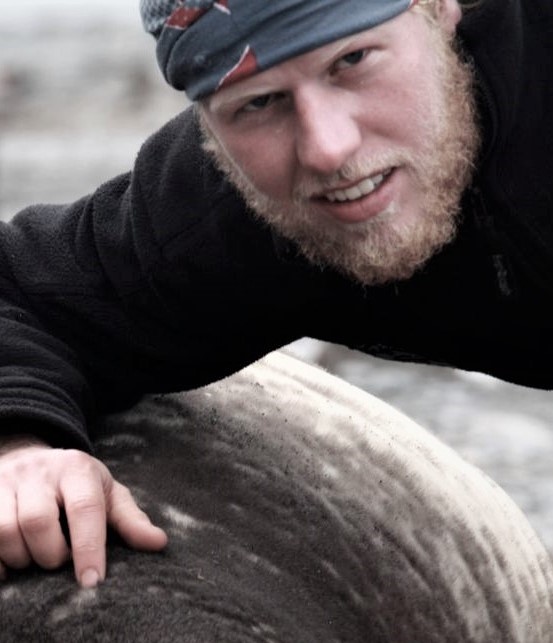

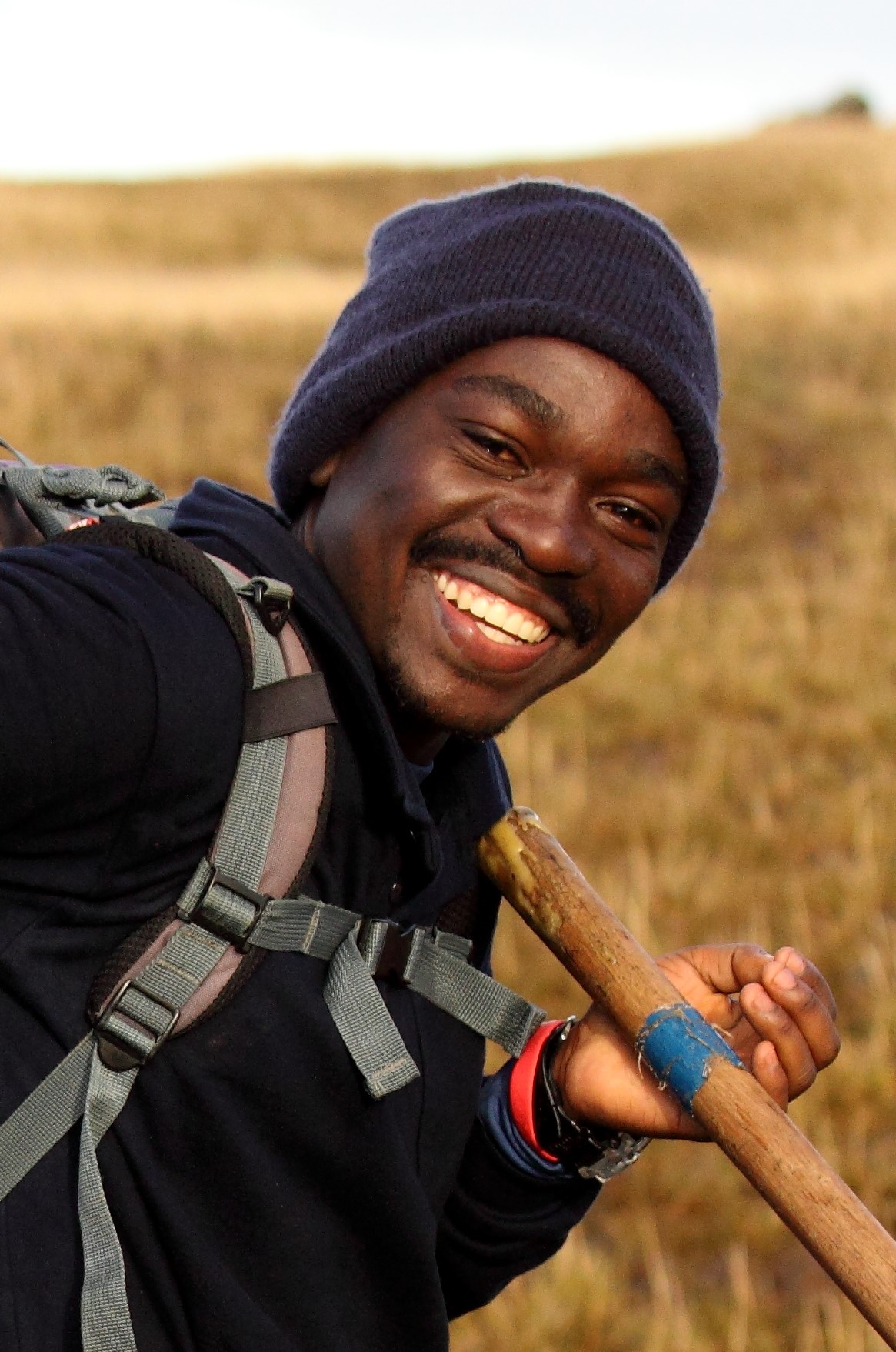
The Prince Edward Island scientific expedition was able to join the symposium on the 30th November and Chris Oosthuizen did his presentation in the session, ‘Data Management and the Summer Survey Participants’ chaired by Dr Christel Hansen. Liezel Pretorius was also able to join the conference on the Thursday. (Above L-R: Chris Oosthuizen, Liezel Pretorius, Yinhla Shihlomuhle)
- Dr Chris Oosthuizen. Marine predators: ecosystem sentinels that help inform Southern Ocean management. (Abstract)
An initiative by Mia Wege was to use the SANAP symposium to bring all “bio loggers/trackers” together, that included researchers who tag animals, mostly top predators across the globe. The purpose was to get some structure going and talk about a potential larger workshop specifically for the entire community. The meeting was well represented, and this was a great opportunity used.
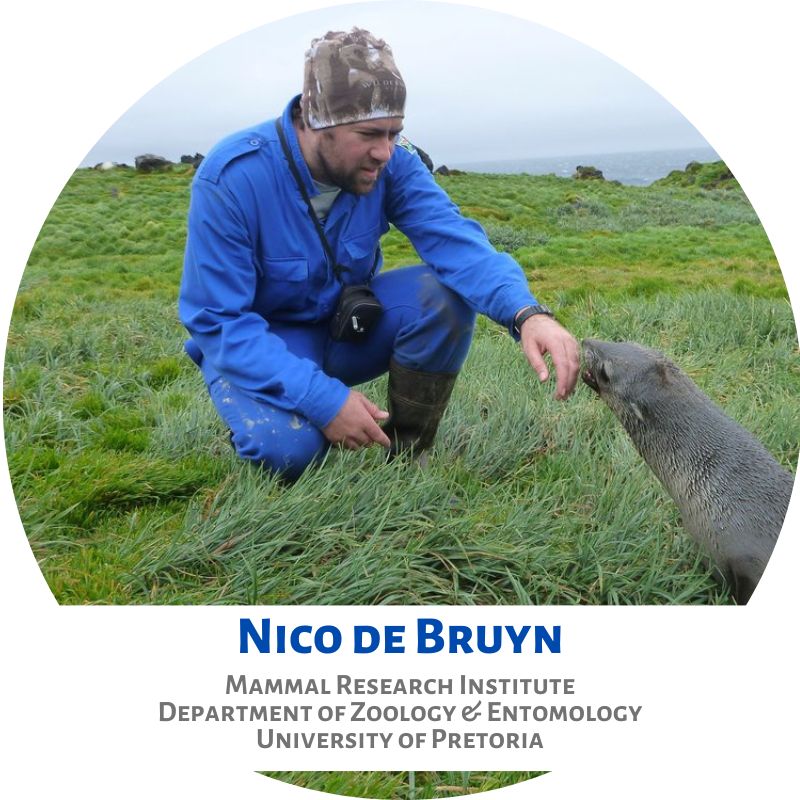
 Two of the Principal investigators of the project were able to attend the symposium. ( Nico de Bruyn(left) – University of Pretoria and Jaco Versfeld (Right) Stellenbosch University)
Two of the Principal investigators of the project were able to attend the symposium. ( Nico de Bruyn(left) – University of Pretoria and Jaco Versfeld (Right) Stellenbosch University)
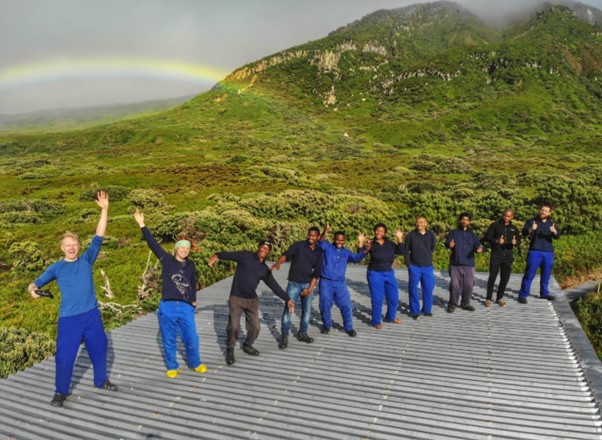
by Ria Olivier | Sep 13, 2023 | Announcement, Antarctica, Engineering, Gough Island, Marion Island, News, Prince Edward Islands, Research, SA Agulhas II, SA Polar Research Infrastructure, SANAP, SAPolarRI, SAPRI, Science, Southern Ocean, Stations
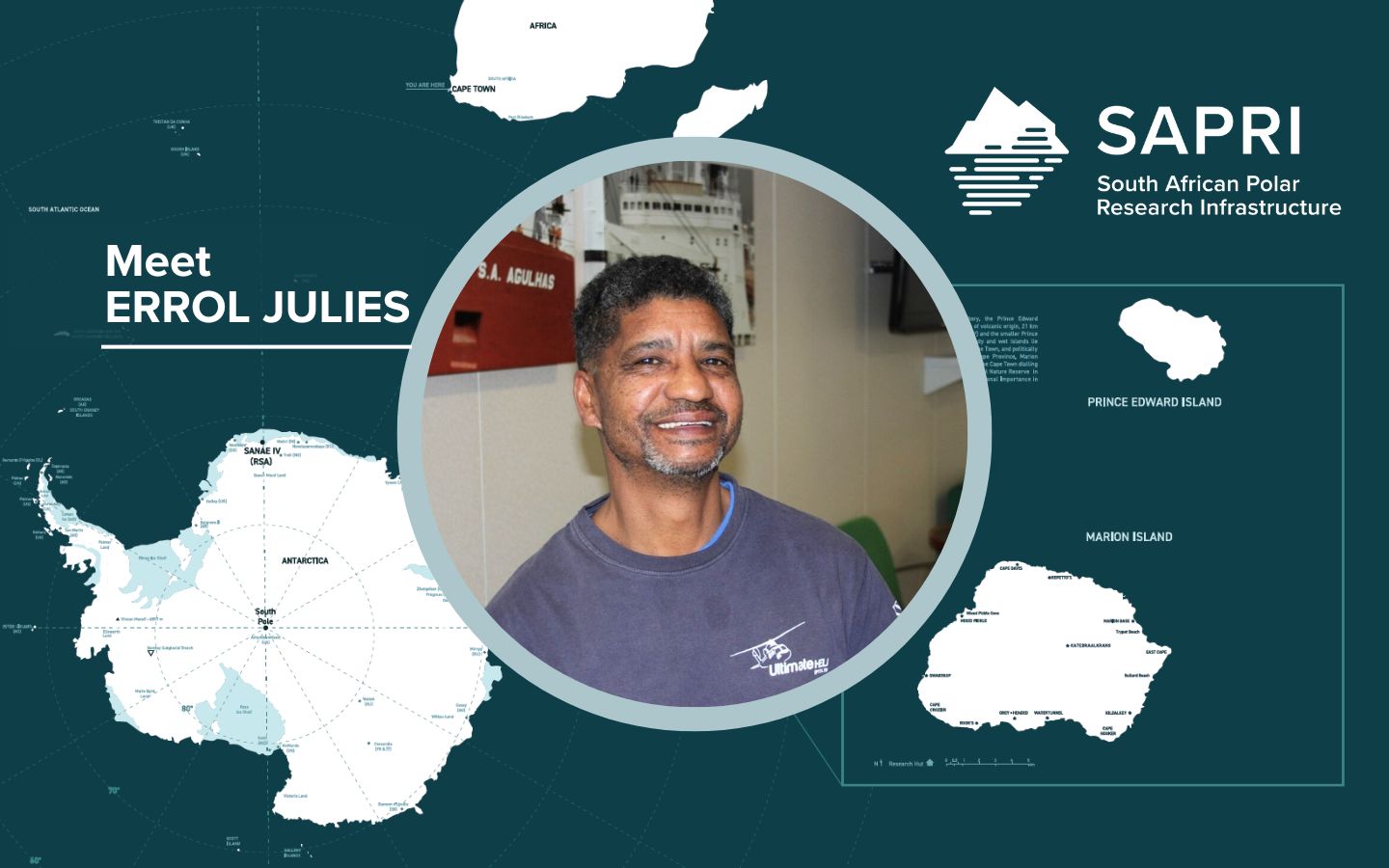
On the 1st of August, Errol Julies joined the South African Polar Research Infrastructure (SAPRI) as a Senior Electronics Technician, bringing with him a wealth of experience and a diverse skill set. His responsibilities at SAPRI encompass the maintenance of offshore marine infrastructure, asset management and supply chain management processes, providing technical support to researchers and students, ensuring compliance with the Occupational Health and Safety Act, and upgrading communication systems at the South African National Antarctic Programme (SANAP) research stations (bases), particularly the High Frequency (HF) systems at Marion Island between the base and field huts. Errol’s previous background and experiences make him an ideal fit for his role at SAPRI, where he continues to make significant contributions.
Meet Errol Julies: A Remarkable Journey of dedication and expertise
Errol Julies, hailing from the small town of De Doorns and having attended secondary school in Worcester, has embarked on an extraordinary path that has led him to become a highly accomplished professional in the scientific and research field.
Errol’s initial foray into the world of work began as an assistant train driver, but it was his introduction to the scientific realm at the Hermanus Magnetic Observatory (HMO), now known as the South African National Space Agency (SANSA), that truly ignited his passion. Starting as a general cleaner at HMO, Errol simultaneously pursued part-time studies and eventually obtained a BTech degree in Electrical Engineering.
For an impressive 17 years, Errol served as a Geomagnetic Observatory Technician at SANSA. In this role, he excelled in installing, maintaining, and monitoring geomagnetic and Magnetotelluric stations across Southern Africa. These stations adhered to the esteemed INTERMAGNET standards, a testament to Errol’s dedication in ensuring their construction and upkeep at the highest level. Additionally, Errol played a pivotal role in training aspiring geomagnetic observers from around the world during the biannual geomagnetic workshops hosted in different countries.
In 2015, Errol joined the Department of Forestry, Fisheries and the Environment (DFFE) as an Engineering Technician, specialising in telecommunications and instrumentation. His responsibilities encompassed managing the Very Small Aperture Terminal (VSAT) communications system from Cape Town to the SANAP bases, conducting calibration and testing of electronic equipment and instruments, and overseeing the maintenance and upgrade of electronic and HF equipment at all SANAP bases in accordance with specifications. Furthermore, Errol took on the role of Departmental Coordinating Officer (DCO), leading numerous voyages to the SANAP bases and successfully coordinating a voyage to Gough Island all by himself.
Driven by a thirst for knowledge and personal growth, Errol completed his BTech degree in Project Management in 2018, despite the challenges encountered during his voyage to Gough Island. In 2019 and 2020, he further demonstrated his resilience and expertise by overwintering on Gough Island as a Communication Engineer and team leader on the 65th Gough Island overwintering team. Currently, Errol is pursuing a Post Graduate Certificate in Education (PGCE), focusing on Mathematics and Mathematics Literacy for the Senior Phase and Technical Vocational Education and Training (TVET) colleges. This endeavor aims to support learners and students in his community through evening classes.
Errol Julies’ journey is a testament to his unwavering dedication, expertise, and commitment to excellence. His remarkable achievements and vast knowledge in the scientific and research field make him an invaluable asset to any organisation fortunate enough to have him on board.
Welcome to the SAPRI team, Errol!
Images supplied by Errol Julies.
Anche Louw, South African Polar Research Infrastructure, 13 September 2023
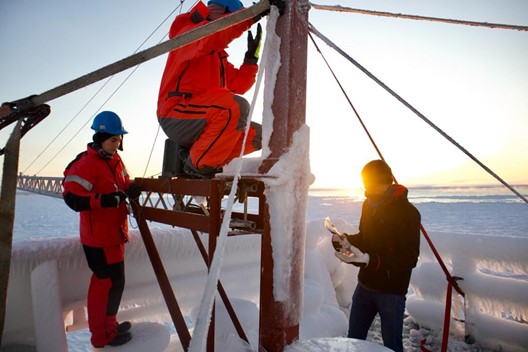
by Ria Olivier | Jul 27, 2022 | Antarctica, Current Event, Engineering, Research, SA Agulhas II, SANAP, Science, Southern Ocean, STEM
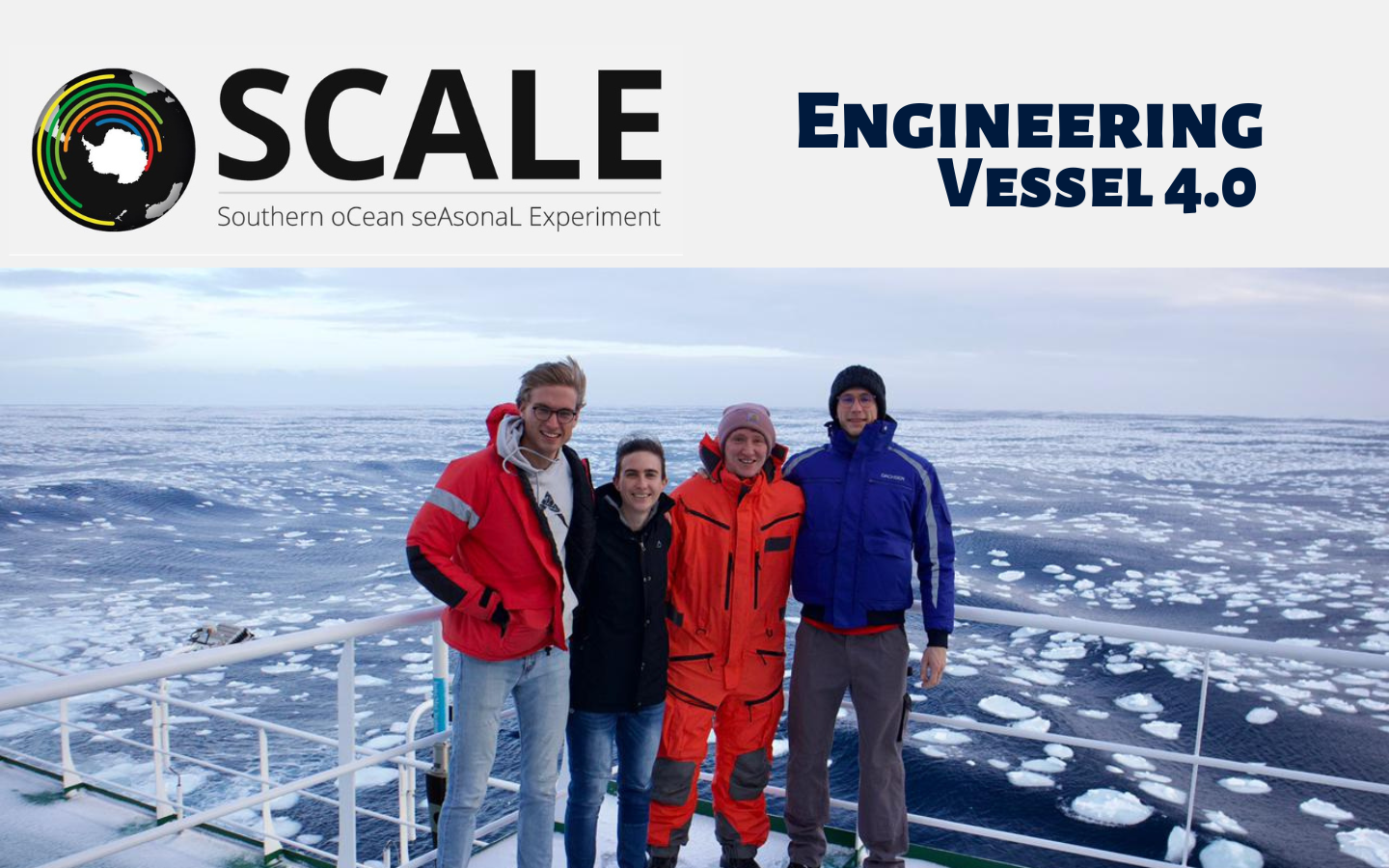
Vessel 4.0 team photo in marginal ice zone. In the photo (left to right): Christof van Zijl, Nicole Taylor, Marek Muchow and Markus Gilges.
| TEAM | VESSEL 4.0 |
| Project name | The Digital SA Agulhas II – Flagship for Vessel 4.0 |
| Principal Investigator | Annie Bekker | Stellenbosch University |
Onboard team members:
| Team Member | Role | Affiliation |
| Nicole Taylor | PhD
Onboard Team Leader | Stellenbosch University |
| Marek Muchow | PhD | Aalto University (Finland) |
| Christof van Zijl | PhD | Stellenbosch University |
| Markus Gilges | PhD | RWTH Aachen University (Germany) |
More about the team and the project:
Nicole and Christof of the Sound and Vibration Research Group of Stellenbosch University, in collaboration with Markus of the HealthProp consortium and Marek of Aalto University, comprise the Vessel 4.0 team. The aim of Team Vessel 4.0 is to investigate the responses of the S.A. Agulhas II as she travels through open water and sea ice during SCALE Winter Cruise 2022.
The S.A. Agulhas II is instrumented with a multitude of sensors, like accelerometers and strain gauges. These sensors function like an internal nervous system, enabling the Vessel 4.0 team to “sense” each vibration and motion of the ship as she breaks through waves and sea ice. So far, the S.A. Agulhas II has had to endure repeated “belly-flops” as she slams into incoming waves (see image below), as well as noteworthy rolling and pitching motions as she climbs and descends large swells on her journey through the Southern Ocean.
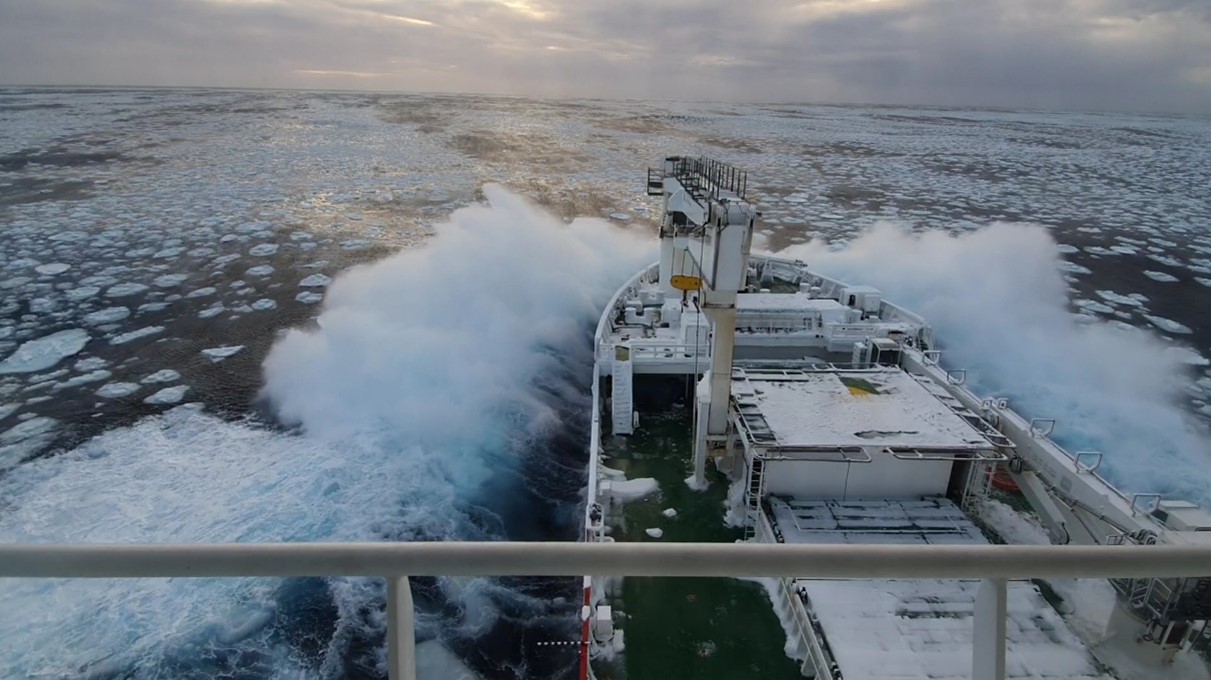
The S.A. Agulhas II in a bow slam while in the marginal ice zone (MIZ). Photo Credit: Nicole Taylor.
The team is particularly interested in studying the loads that the ice and waves cause to the hull and propulsion system of the ship. They perform engineering analyses of measurements from the hull and propulsion system to understand how intensively the Southern Ocean and its sea ice require the S.A. Agulhas II to work while navigating through winter conditions. In the image below (left), Markus is shown monitoring his measurement system located in the shaft line.
Additionally, the team is performing visual observations of the sea and ice state around the S.A. Agulhas II throughout the time of the cruise. It helps to record details about the environment that the ship encounters so that the team members have a clearer picture of what the installed nervous system is sensing. Team members spend hours being the “eyes” of the nervous system, writing down metrics like what the wave height and the direction of the main wave train is when in open water, or, when in ice, how thick the ice is and what type of ice the ship is breaking through. Christof is shown seated in the bridge while recording the sea ice conditions in the image above (right). The ice observations are done 24/7 while they are in the marginal ice zone with spotlights on during the night.
The team also uses other instruments, like cameras and lasers, to take measurements and snapshots of the ship’s environment. These really help when working through the measurements and visual observations back in the office after the cruise to understand what happened on board. In the image below Marek, Nicole and Christof are shown in the process of installing an ice thickness measurement system at the bow of the ship.

Ice thickness measurement system installation. In the photo (l-r): Nicole Taylor, Marek Muchow and Christof van Zijl. Photo credit: Kurt Martin.
Along with carefully studying the ship and the environment she interacts with, the team has recruited passengers to participate in their human response research to better understand how people experience living and working on board. During Winter Cruise, the team has distributed custom-developed human-centric software in conjunction with more traditional questionnaires. Through the Mariner 4.0 mobile application and daily diary booklets, participants are equipped to record their daily perception of vibration, noise and motion that may cause them discomfort or illness. The Mariner 4.0 application enables real-time data capturing and analysis on board that has a greater aim to support monitoring and managing of human activities. For example, this could be used to assist with planning research on board and navigation decisions to maximize the time during which researchers are estimated to be the least motion sick and able to work well.
 Read more about the research that Team Vessel 4.0 team members are part of:
Read more about the research that Team Vessel 4.0 team members are part of:
Text supplied by Team Vessel 4.0
Featured images supplied by Kurt Martin (SAPRI trainee)
Anche Louw, Antarctic Legacy of South Africa, 27 July 2022
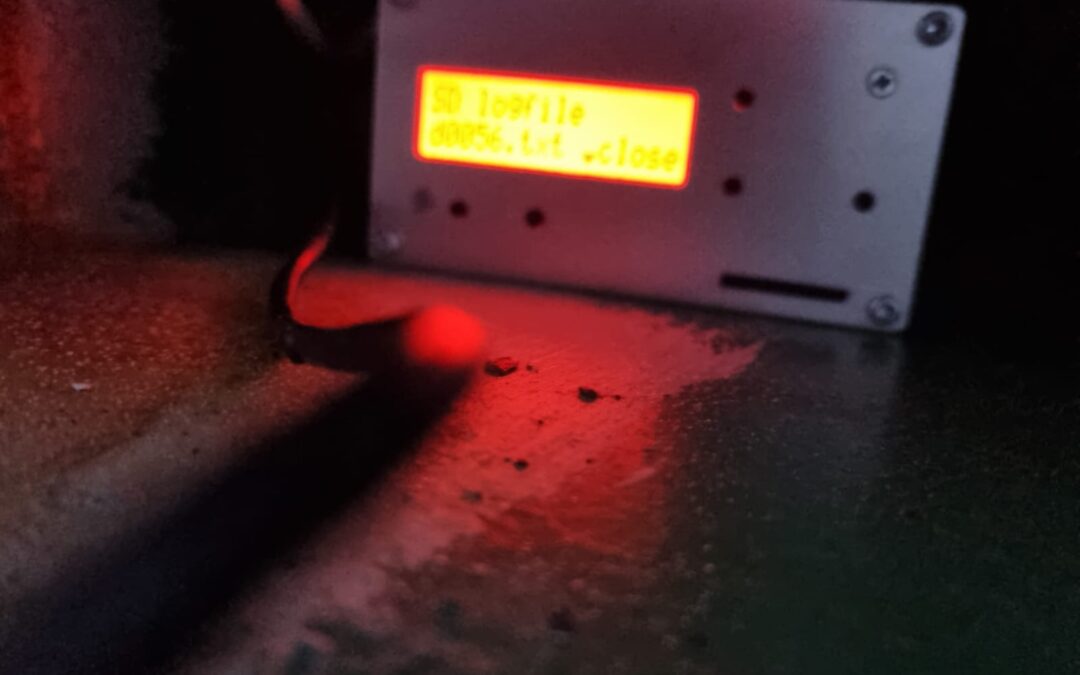
by Ria Olivier | Jul 26, 2022 | Antarctica, Current Event, Engineering, Research, SA Agulhas II, SANAP
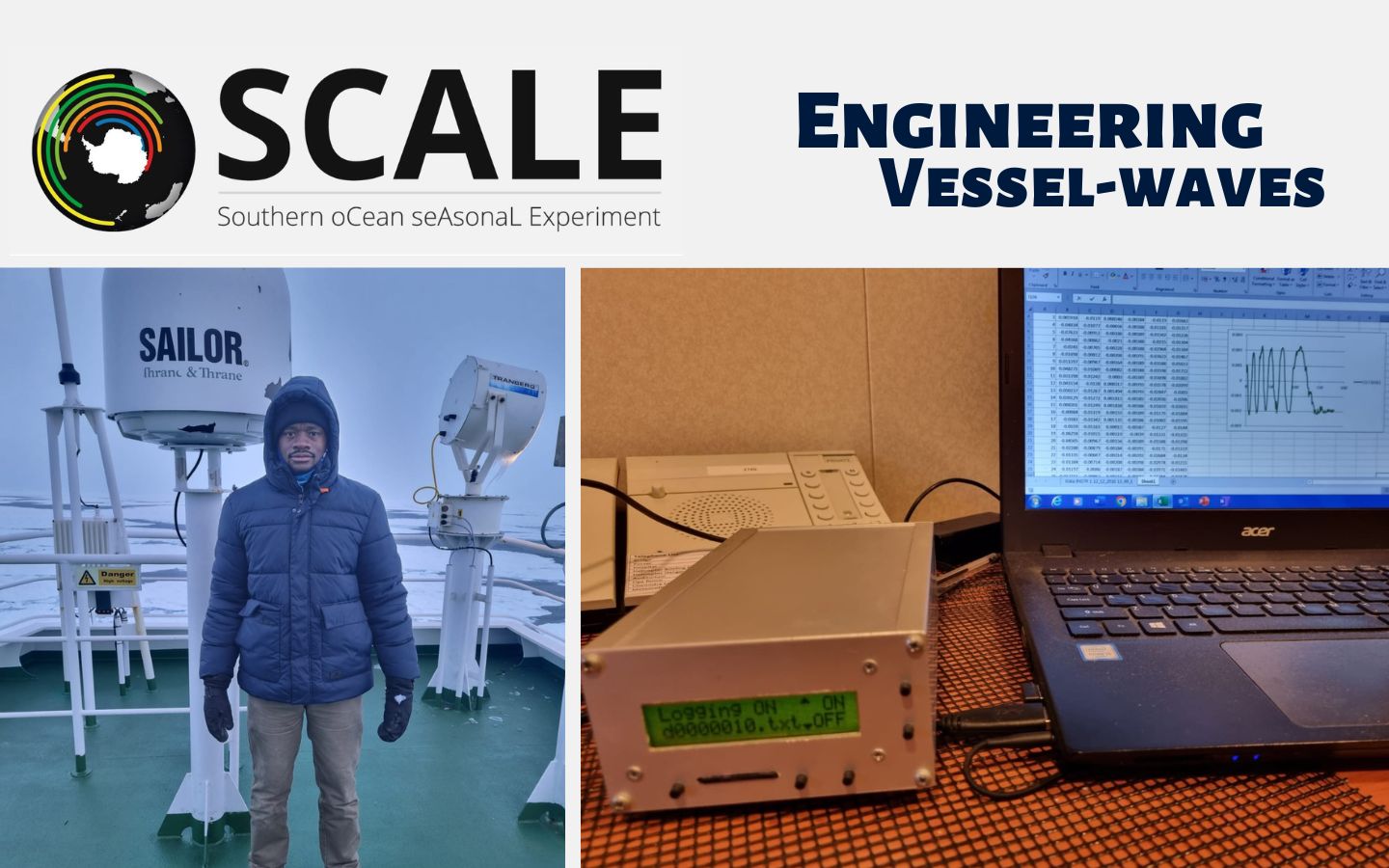
L-R: Paul Senda (onboard team member). Data recorded with the sensor in Room 7320 are being interpreted with mathematical modeling.
| TEAM | VESSEL-WAVE |
| Project name | Reconstruction of sea surface elevation from moving vessel |
| Principal Investigator | Butteur Ntamba Ntamba | Cape Peninsula University of Technology (CPUT) |
| Onboard team member/team leader | Paul Senda | CPUT |
More about the project:
Four IMU (Inertia Measurement Unit) sensors are installed on the S.A. Agulhas II – two sensors are near the center of gravity of the ship, one on the monkey deck and one on deck 7 (Room 7320 – for quick verification of the code). The sensor is a small, self-contained strap-on system and records the time series of roll, pitch and heave.
We know the ship’s response to waves, as described by Response Amplitude Operators (RAO). These must be computed numerically from the shape of the ship’s hull (the hull of the SAAII, which I obtained while she was on dry dock in 2019. We did a 3D scan of the vessel with Prof Bekker). We have developed software which relates the observed time series with the RAOs to the statistical characteristics of the sea state. Once it works, we can use a ship as a sensor for the sea state in which it travels.
Data recorded using the IMU are used to verify the algorithm or mathematical model and existing software predicting or giving the input to the ship’s motion on the sea which is waves. The understanding of sea waves will allow people or vessels for better seakeeping, seakeeping behavior and identify parts of the ship that affect good seakeeping.
Text and images supplied by Paul Senda.
Anche Louw, Antarctic Legacy of South Africa, 26 July 2022.



 The last session on research themes were earth observations within the Marine and Antarctic Research Strategy research themes. The session on Space Physics was chaired by Dr Stefan Lotz. Dr Michael Kosch was not available in person but joined online with his presentation. (Above: group photo of presenters). All the presenters are from the South African National Space Agency (SANSA) based in Hermanus.
The last session on research themes were earth observations within the Marine and Antarctic Research Strategy research themes. The session on Space Physics was chaired by Dr Stefan Lotz. Dr Michael Kosch was not available in person but joined online with his presentation. (Above: group photo of presenters). All the presenters are from the South African National Space Agency (SANSA) based in Hermanus. Above(l-r): Michael Kosch, Tshimangadzo M. Matamba, Nkosinathi Masango, Pierre Cilliers, Alicreance Hiyadutuje
Above(l-r): Michael Kosch, Tshimangadzo M. Matamba, Nkosinathi Masango, Pierre Cilliers, Alicreance Hiyadutuje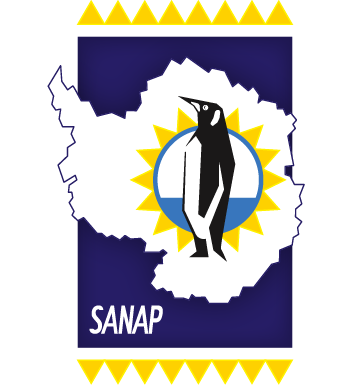

 Above (l-r): Annie Bekker, Gerhard Durandt, Chante Van der Spuy, Nico de Koker
Above (l-r): Annie Bekker, Gerhard Durandt, Chante Van der Spuy, Nico de Koker Above(l-r): Micaela Melim, Ben Steyn, Brendon Nickerson, Nicole Taylor
Above(l-r): Micaela Melim, Ben Steyn, Brendon Nickerson, Nicole Taylor International speakers join the session and Sarah Nicholson of SOCCO present on robotics innovation. JP Barnard gave a presentation on data management during the cross-theme session chaired by Anne Treasure on day 1. Above(l-r): Jukka Tuhkuri, Miko Lensu, Sarah Nicholson, JP Barnard
International speakers join the session and Sarah Nicholson of SOCCO present on robotics innovation. JP Barnard gave a presentation on data management during the cross-theme session chaired by Anne Treasure on day 1. Above(l-r): Jukka Tuhkuri, Miko Lensu, Sarah Nicholson, JP Barnard

 Dr Mia Wege chaired the session on Marine Mammals during the 6th SANAP Symposium that resorts within the Marine and Antarctic Research Strategy – ecosystems, biodiversity and biodiscovery. The session includes talks on various marine and the presentations were arranged according roughly to species and area. This Included elephant seals, fur seal, Ross seal, whales in ice, whales along the Southern African coast The session was presented in panel, discussion format, that allowed for questions form the audience. (Photo Credit: ALSA Archive)
Dr Mia Wege chaired the session on Marine Mammals during the 6th SANAP Symposium that resorts within the Marine and Antarctic Research Strategy – ecosystems, biodiversity and biodiscovery. The session includes talks on various marine and the presentations were arranged according roughly to species and area. This Included elephant seals, fur seal, Ross seal, whales in ice, whales along the Southern African coast The session was presented in panel, discussion format, that allowed for questions form the audience. (Photo Credit: ALSA Archive)











 Two of the Principal investigators of the project were able to attend the symposium. ( Nico de Bruyn(left) – University of Pretoria and Jaco Versfeld (Right) Stellenbosch University)
Two of the Principal investigators of the project were able to attend the symposium. ( Nico de Bruyn(left) – University of Pretoria and Jaco Versfeld (Right) Stellenbosch University)







